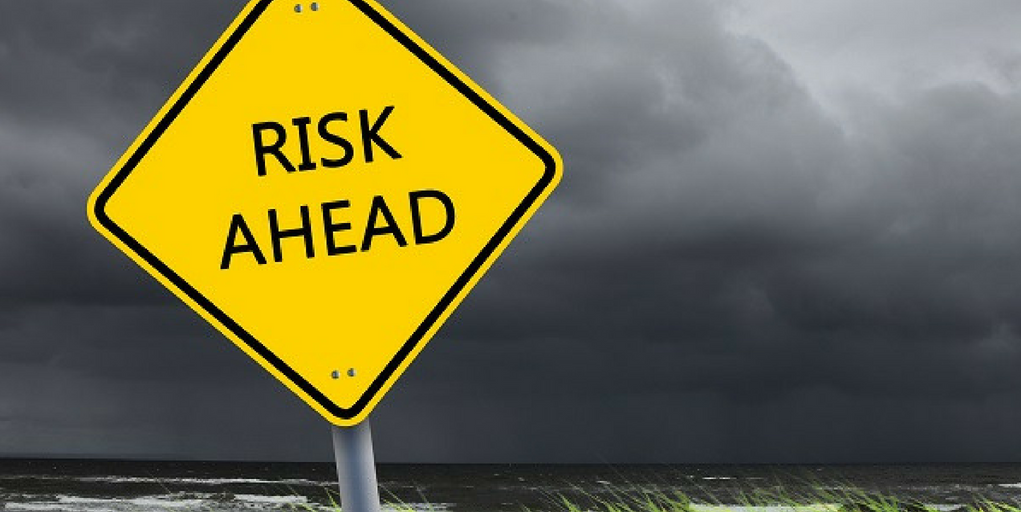Many business people have a hard time seeing the value of SEO, and we understand that. There is a lot of information and misinformation out there about search engine optimization, and it can really increase the difficulty of this decision.
While an effective SEO strategy will take many months to yield positive results for a company, and the tactics may not make sense for non-SEOers, it can make a significant improvement in a company’s online exposure and profits.
Many companies are naturally nervous about trying something out they’re not familiar with, but let’s face it, nearly any business decision is going to carry some risks with it. Some can be avoided, and some can lead to sudden and serious growth.
The question that has to be asked, then, is what SEO risks are worth it, and which should be avoided.
Before we get into it, though, let’s put this out there first: the greatest SEO risk a company can make is to avoid SEO all together. Everyone got that? Great. Let’s consider a few more.
SEO Risks to Take
1. Making and Testing Large and Small Changes
The overall goal of SEO is to get traffic and, ultimately, transactions on your website.
Neither of those will happen if nobody clicks on your website in the first place.
So, what if you’re getting your website to rank well for certain keywords, but no one is actually clicking on your link?
There could be any number of reasons for this, and it can take some time to zero in on exactly why it isn’t performing as well as expected.
And the only way to do that is through A/B testing. You’re going to have to take one element at a time, whether that’s the meta descriptions, the titles, the content and more, and test them against new variations.
That’s all well and good and even a little obvious. So what makes it a “risk”?
It will likely take a bit of trial and error to come up with the correct wording and layout combination that results in maximum website traffic and transactions. During this time, you may find a combination that doesn’t work well at all and ends up reducing what traffic you do have – at least for a while.
The risk is worth it, though, because once you find the best results, you’ll be able to focus on that element and continue to drive more traffic and get better returns.
As you make changes, you should document what was changed, when it was changed and the date it was first re-crawled by Google after the change. This will help you correlate ranking movements to changes made. Just make sure you use a solid keyword rank checker so you’re data is valid and useful.
2. Getting and Giving High-Quality Backlinks
Why would one company feature a link to another company’s website and risk the web user leaving their page?
Backlinks are a well-established part of SEO, and most companies want to get as many of them as they can. They help increase rankings and build authority.
However, it’s not just about being the one with the most links. Sometimes you need to give a little back.
So, yes, you may risk losing a few web visitors by providing a link to other high-quality sites, but at the same time, you’re showing Google that you are using and referencing reliable sites with established authority.
Just keep in mind, webpages that knowingly feature links to low-quality, malicious, spammy websites are at risk of getting penalized by Google. You may also get penalized by getting too many links to your site from those poor-quality sites.
3. Enhancing Your Site’s URL Structure
Ideally, your homepage URL should be short, with only the company name, such as: www.yourcompany.com. Short, simple, concise and easily remembered.
Subsequent pages, however, should have targeted keywords and be more specific about the content of the webpage.
Even so, you don’t want to let the URL get out of hand. If they’re too long and descriptive, the search engine will truncate their display with a […] after a cut-off point.
So, it may be time to alter some of your URLs with an overhaul of the site’s structure.
The risk, here, is that any kind of change like this can impact your rankings. As you alter old URLs and 301 redirect traffic to the new ones, you may see some dips in traffic and rankings.
However, if you do it right, you can end up with a streamlined structure that appeals to both search engines and internet users.
4. Overhauling Your Website
Every once in a while, websites need to get updated and redesigned. Website redesigns can be risky and expensive, not to mention time-consuming.
Eventually, though, your website may need a new facelift. Maybe it just looks extremely outdated. Then again, it may be optimized for search engines, but human users find it difficult to navigate. There could be any number of reasons to take another look at your website and maybe – just maybe – consider reconstructing it from the ground up.
Of course, just like changing the URL structure, these types of changes come with a risk to your rankings as Google tries to re-evaluate your site. For that matter, it comes with the risk of alienating customers who have grown accustomed to your website just the way it is.
Usually, though, Google understands that every website goes through these overhauls every once in a while, so your rankings will usually bounce right back. You just have to be patient. Most of your customers will eventually get used to the changes, too. More importantly, updated your website has a better chance of bringing in many more new clients.
5. Buy Expired or Available Domains
Some website owners, for whatever reason, don’t renew their domains, making them available for others to buy and use.
Buying some domains with a history and redirecting them to your site can potentially be a quick and easy way to increase the number of valuable backlinks adding some link juice to your site.
There are some serious risks with this technique, though, so you should only do so when you know exactly what you’re doing.
The domain, for example, has to be related to your business. It should be professional and legitimate, because if that domain still receives rankings and traffic, those visitors will be redirected to your site, and there is nothing more frustrating than arriving on a site that isn’t at all related to your original search.
Also, expired domains that were filled with spammy content and links will also be transferred over to your website, causing your site to potentially drop in rankings and get penalized by Google.
This tactic, however, is inexpensive and has the potential to drive serious traffic to your site if you follow the best practices.
|
and see how your site is currently performing.|

SEO Risks to Avoid
Now that you have an idea of what SEO risks are worth taking, here are SEO risks that will likely do your business more harm than good:
1. Poor Doorway Pages (or any doorway pages at all)
Doorway pages are simple and easy to create in batches to target specific keywords and keyword groups. Trustworthy SEOers avoid doorway pages as a rule because Google greatly dislikes them and penalizes sites that use them.
Google’s opinion of such pages should be reason enough for you to avoid this particular risk.
The only time Google will let doorway pages slide is if they offer unique, clear and valuable content and information to the site visitor – in other words, only if it acts just like the regular content on your website.
There is simply no reason to bother with them, so don’t risk it.
2. Disallowing Neutral Backlinks
You want good backlinks to your website, not bad ones. What about the ones that are neutral, that don’t help, yet don’t hurt your website’s ranking and SEO?
Neutral backlinks may not give your website the SEO boost it needs, but they also won’t subject your site to Google’s potentially harsh penalties.
In fact, with Google’s Penguin update, some penalties for bad backlinks because the search engine realized that the websites themselves don’t have control over every site that links to theirs.
As a result, it is harder for a site to be punished by Google for malicious backlinks.
The only way you’ll be able to tell if the backlinks on your website are bad, spammy and low-quality is if you’ve noticed that Google has taken manual action on your site.
If no action has been taken against your website by Google, the backlinks on your website are safe, though they may not be high enough quality to boost your site’s search rankings.
It is possible to disavow certain links, but you need to be careful about it. If you attempt to disavow all your neutral links, you risk potentially blocking sites that can improve your ranking.
3. Deleting or Condensing Content or Entire Pages
It may seem like no big deal to delete a page from your website, especially if it is about a product or service your company has discontinued.
Once a page is deleted, the keywords it once ranked for are now gone. The same thing happens to the URL of the page, which also includes those page-specific keywords.
Instead of risking the loss of those rankings, consider keeping the webpage even if you’ve discontinued the product. Simply leave a message on the page for the visitor that redirects them to a similar page with a relevant product or service.
If you’re merging or condensing two pages into one, make sure to include 301 redirects on the old URLs to make sure that all the link juice and traffic isn’t lost.
4. Using Exact Match Keywords in Anchor Text
It may seem logical to have your targeted keyword as the anchor text for a link to your website. After all, you want your site to rank for that keyword or phrase.
This practice was popular for SEOers in the past who had the same logic. Unfortunately, this practice got abused by “black hat” SEOers who used an excessive amount of exact match keyword anchor texts to link to their websites – and the links didn’t exactly come from the most authoritative sites.
Since then, Google has greatly cracked down on this practice and will punish websites who overdo this practice. Don’t risk it. Look for more natural ways to link to your site and develop a more varied backlink portfolio.
5. Making Too Many “Small” SEO Changes to a Site
Occasionally, it is a good idea to update the content on your website. In fact, Google favors fresh, updated content.
However, constantly changing the content and the look and feel of your website, even a little bit at a time, strictly for SEO purposes, will not go unnoticed by your website visitors or Google.
Making too many changes to your website or making the changes too often will raise red flags for Google which will likely see your webpage as suspicious and likely penalize your site.
Over time your site visitors will also notice the changes (especially since most of the changes were likely done for search engines instead of them). If this happens, they may find your site harder to navigate and find value. Some visitors may even start to think your site is suspicious.
Balancing Risk and Reward
SEO is essential for any business to succeed. There are many risks to SEO, some of which are worth taking because they can produce favorable results for a business. Other risks can harm and hinder a company’s internet marketing strategy and online presence.
As risky as SEO is, the only thing riskier is for a company not to do any SEO at all.
Social media has its own share of risks. So before you jump into your next campaign, download and complete this checklist to ensure everything is ready to go.






